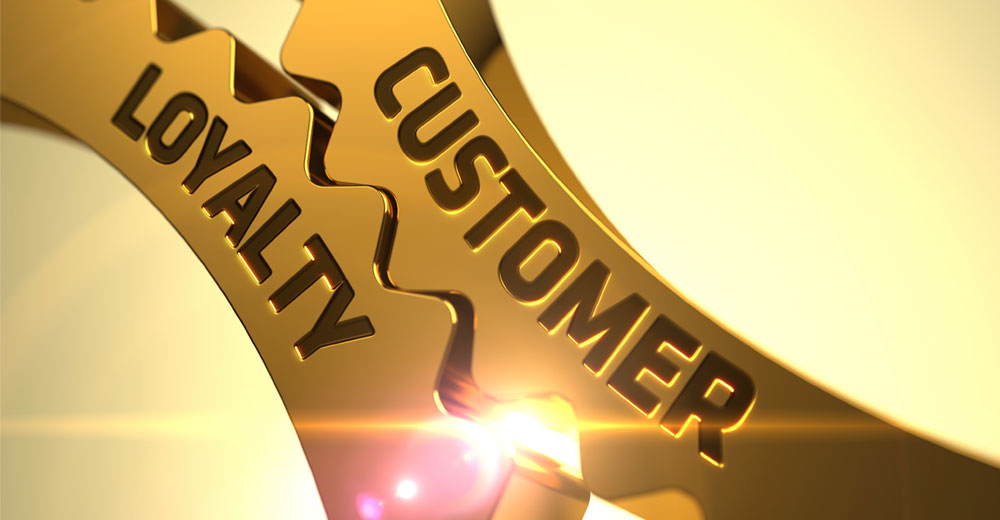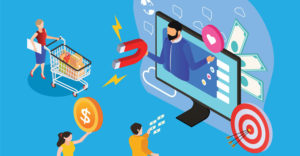With inflation in the U.S. hitting 9.1% in June, merchants are facing enormous challenges when it comes to building customer loyalty — and keeping it.
Given that brands are facing declining margins as inflation hits them hard too, how can they build a more loyal customer base without resorting to deep discounts to move product?
There are better options related more to keeping customers engaged and making them feel appreciated, so in the long term they remain loyal to that brand.
Following are four strategies to help brands meet their customer engagement and loyalty objectives.
1. Focus on marketing that benefits customers and protects return on ad spend
One option that brands can start with is to evaluate their marketing efforts and focus on pricing models which not only protect return on ad spend (ROAS), but also benefit customers.
Two beneficial types of marketing that don’t rely on a pay-for-exposure or cost-per-click model are referral programs and affiliate marketing. Both approaches enable retailers to reduce their marketing spend while consumers save money, earn bonuses, or get insider access to exclusive products or deals.
Referral programs recognize existing loyal customers and use their trust in a brand to capture new customers. Typically, brands incentivize the existing customer (the “referrer”) by offering the referrer a small reward for sending along new customers (“referees”).
Retailers can protect the efficiency of their spends by only offering referrers an incentive when a referee makes a purchase, such as a small flat-rate bonus if their referee completes an order at a minimum purchase threshold.
With affiliate programs, brands operate on a pay-for-performance pricing model, in which a site or individual (aka “publisher”) promotes the brand’s products to their audience, and if audience members make a purchase, the publisher earns a small commission of the completed transaction.
Like referral programs, affiliate programs also offer a built-in positive ROAS because the marketing spend (payout to publishers) is always based on actual sales.
Affiliate marketing is a critical component of many brands’ marketing initiatives because it can economically expand the reach of the prospective customer pool to relevant audiences at scale. In addition, participation in affiliate marketing helps to position retailers to take advantage of up-and-coming promotional techniques offered by third-party loyalty and cash back publishers who offer tools to help customers capture cash back for shopping.
This brings us to the next point…
2. Offer customers an easy-to-understand rewards option: cash is king!
Earning cash back on credit card purchases is a well-known and loved tool. But now, cash back rewards for shopping are growing in popularity due to programs such as Honey and Capital One Shopping, so consumers are becoming used to the ease of receiving cash back rewards for online purchases in addition to credit card cash back.
The importance of providing easy-to-understand and simple-to-use rewards cannot be overstated. For one, cash back for shopping is easy to redeem and typically there are lower “minimums” for redeeming rewards. Aside from the convenience and simplicity, cash back-on-shopping programs are proving helpful to consumers who are tightening their belts in these inflationary times to offset higher costs.
Most retailers are not positioned to offer cash back to consumers directly. Instead, to gain exposure to customers participating in these types of programs, retailers with affiliate programs need to ensure they allow their brand to be showcased in those publishers’ outlets, which may include an app or browser extension that enables customers to earn cash back from any online retailer they visit.
Today’s eagle-eyed budget-conscious consumers will more likely shop at a store with cash back available, so retailers must use every tool possible to maximize their store’s appeal to these consumers.
3. Offer BOPIS to capitalize on convenience
“Buy online, pick up in store” (BOPIS) is more popular than ever because consumers can shop from the convenience of their home and pick up purchases in store, saving shipping costs in the process. BOPIS allows retailers to meet the customers literally where they are and satisfy their expectations for convenience.
With many retailers sitting on excess inventory, sellers can emphasize their BOPIS programs with a special merchandising offer to get customers to leave their cars and enter the store to increase the chances of an impulse purchase.
Retailers using the BOPIS tactic should aim to create opportunities for foot traffic as they try to unload excess inventory. In effect, they can potentially convert those online purchasers into in-store shoppers by placing well-priced or already discounted items near the front of the store in an attempt to drive those sales.
4. Creatively leverage proprietary loyalty programs
While loyalty programs from a particular retailer are not a new concept, rewarding consumers with points on every purchase is effective because it increases engagement with the incentive of a deal or interesting product at a future date. Customers keep spending and have an aspirational goal to reach to qualify for their next discount.
Rather than only dangling that “future discount” carrot, retailers should think about how they’re adding value too. Because of the wealth of permission-based customer data available to brands through their proprietary loyalty programs, they can get creative with strategies that add customer value, such as:
- Personalization. If the consumer regularly buys a consumable, auto-remind them to repurchase around the time they’re likely to be needing a refill of that product.
- Cross-promote other relevant product verticals. Highlight similar products/brands in the same categories that a given customer usually buys from. Or consider exposing them to new categories such as “best rated” or “most popular” products. Retailers should choose which products/verticals to promote based on margins, inventories, and other pertinent factors.
- Subscriptions for necessities. Auto-replenishing subscription programs have been used to great success, most notably by Amazon Prime’s “Subscribe & Save” for everyday essentials. Sephora just launched “Auto Replenish” which offers subscribers a small 5% discount while at the same time effectively locking in a predictable revenue stream. This is a smart strategy, especially with inflation leading consumers to rein in discretionary spending in lieu of required expenditures like groceries and gasoline.
Conclusion
Retailers today need to make themselves the hero to the consumer. Not just with discounts, but by making their life better or adding convenience in some way. In effect, what will customers remember when we get through this latest challenging economic era? It’s not just going to be the lowest prices; it’s going to be how the brand provided value at a time when consumers are watching every penny.



















































Social Media
See all Social Media